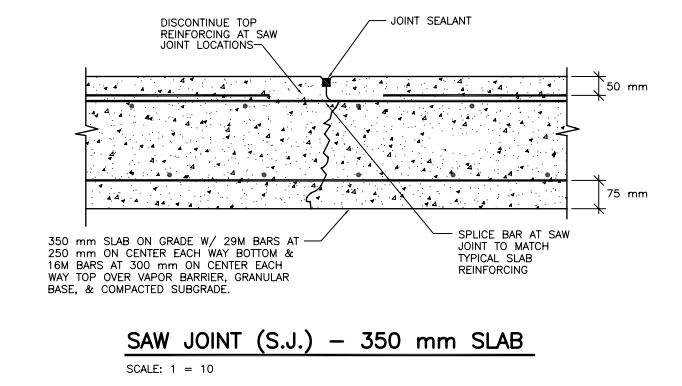I've been looking into when to continue rebar across joints myself recently and have come to the following conclusions:
1) If A_s ≤ 0.1% * A_slab, then the slab is essentially unreinforced and requires contraction joints. CJ spacing should follow the recommendations for unreinforced SOGs in ACI360R for commercial SOGs or ACI 332-14 Residential Code Requirements as referenced by IRC R506 for residential SOGs. It is recommended that all reinforcement be continued through the joint at this level. Going completely unreinforced may be an option depending on your application; however, SOGs with this level of reinforcement provide some improved random cracking control and joint stability (in deflection) over completely unreinforced slabs.
If 0.1% * A_slab < A_s < 0.5% * A_slab, then the slab is quasi-unreinforced and requires contraction joints (spacing as above). However, it is recommended that reinforcement across the joint be reduced to ~0.1% * A_slab to allow the joint cracks to develop. This is also the most "dangerous" range for a designer and has been referred to as the "courthouse zone" due to the potential for improper detailing/construction. If too much reinforcement is continued across the joint, then out-of-plane cracking will occur because the amount of reinforcement is too high for the joint crack to activate, but too low in the slab to tightly hold cracks together to an "acceptable" width. If you are in this range, I would suggest either increasing or decreasing your reinforcement - as appropriate - to fall in one of the other ranges.
If A_s ≥ 0.5% * A_slab, then the slab is reinforced/constrained and does not need contraction joints. However, because such a slab will have tight cracks, the aesthetics of these cracks and crack widths needs to be discussed with the owner to ensure the performance of the slab will meet the owner’s expectations. Additionally, 0.5% is the minimum, but ACI 224R recommends a higher amount of 0.6%. This type of SOG is common for liquid impoundment and when minimizing joint maintenance is desired.


